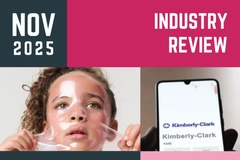Haut.AI’s SPF Truth Booth simulates how sun damage ages the skin

Haut.AI has launched its interactive SPF Truth Booth, a generative AI-powered sunscreen tool that shows users how their skin could age with and without sun protection. The tool aims to make the science behind SPF more personal and visible. It went live yesterday, coinciding with UV Safety Awareness Month.
The tool, powered by Haut.AI’s proprietary SkinGPT engine, creates side-by-side visualizations of future skin changes caused by UV exposure. Users upload a selfie and receive realistic projections of their skin up to 10 years from now, once with daily SPF protection, and once without.
“This is not a filter. It’s powered by generative AI, which means it creates each individual skin pixel based on the provided prompt, and those prompts are informed by peer-reviewed science,” Anastasia Georgievskaya, CEO and co-founder of Haut.AI, tells Personal Care Insights.
The SPF Truth Booth targets the rising demand for visual, data-backed skin care education, especially among younger consumers. According to the company, recent figures show 87% of Gen Z and millennial buyers trust scientific proof over influencer claims, pushing brands to demonstrate efficacy with data.
In addition to the Truth Booth, Haut.AI has also released a ranking of 2025’s most effective facial sunscreens, called the SPF Protection Power List. The list evaluates products based on ingredients, formula stability, and environmental impact and aims to offer consumers a straightforward, unbiased guide.
Gen AI meets sun safety
Some people may not be aware of the effects of daily UV exposure, especially on cloudy days or through windows. Haut.AI hopes to close this awareness gap by giving users a visual reference point.
The company’s SkinGPT technology, which powers the SPF Truth Booth, is trained on over three million facial images from diverse global users. Unlike standard filters, the system does not apply a generic aging effect but rather analyzes the user’s skin characteristics.
.jpg) Many people underestimate the cumulative effects of daily UV exposure, even on cloudy days or through windows.Haut.AI’s tool examines texture, pigmentation, and elasticity to simulate how those features might evolve over time.
Many people underestimate the cumulative effects of daily UV exposure, even on cloudy days or through windows.Haut.AI’s tool examines texture, pigmentation, and elasticity to simulate how those features might evolve over time.
“Our team collected known dermatological research insights on how the skin changes over time, with and without consistent sun protection,” says Georgievskaya. “These findings were then translated into the simulation logic behind the SPF Truth Booth.”
Haut.AI emphasizes the tool’s value as an educational experience rather than a novelty. “It’s opening up conversations about how AI can make product efficacy more tangible and relatable for consumers,” Georgievskaya explains.
“Consumers are done with vague claims about product efficacy. They don’t just want to hear about the science — they want to see it.”
Inclusive transparency
While AI analysis tools have become popular on social media, Haut.AI’s SPF Truth Booth aims to differentiate itself by emphasizing inclusivity.
“Unlike traditional filters that apply the same effect across every face, SkinGPT actually calculates the biological starting point of each user’s skin,” says Georgievskaya.
This personalized model allows the experience to reflect actual differences across skin tones, types, and conditions. The company says this feature was crucial for design, as generic simulations often fail to resonate with users who do not see themselves represented in the results.
“It’s a whole new way to connect science with personalization — making results feel real, not theoretical,” she adds..jpg) Haut.AI has also released a science-driven ranking of 2025’s most effective facial sunscreens.
Haut.AI has also released a science-driven ranking of 2025’s most effective facial sunscreens.
Clarifying a saturated market
Beyond the Truth Booth, Haut.AI has introduced the SPF Protection Power List. It was developed by biophysicists and biologists, who analyzed products based solely on their ingredient lists without referencing marketing claims.
“We focused on the most frequently discussed and reviewed products in online skin care communities,” says Georgievskaya. “Each was graded across five main criteria: UV coverage, formula stability, skin benefits, environmental impact, and filter type.”
The scoring framework is published on the company’s website, giving consumers a transparent view into how rankings were determined.
According to the company, this science-based approach makes the list a trustworthy resource for sunscreen buyers seeking clarity in a saturated market.













